There’s one metric every general manager (GM) wants to grow and maintain year over year — their average daily rate, or ADR.
Your ADR is the average revenue earned from each room sold, per night. It’s one of the key metrics hotels use to measure the performance of their operation in comparison to their direct comp set (competition).
ADR can also give hoteliers an understanding of the rates they should be charging. By analyzing historic ADR data, they can pinpoint which periods experience an increase in demand so that they can increase future rates accordingly.
How to Calculate Your Average Daily Rate
To calculate ADR, divide the total room revenue for the set period by the number of rooms rented during the same period.
ADR = Total Room Revenue for the Period/ Number of Rooms Rented for the Period
If, in one month, a hotel earns $125,000 in total revenue through the sale of 100 rooms, the ADR would be $1,250.
Average Daily Rate and Its Relationship with Occupancy
The occupancy rate is the percentage of occupied rooms in the property at a given time. Tracking the pace at which people are booking rooms at different rate levels enables you to understand consumers’ responses to those different rates, which is data you can use to make strategic pricing decisions.
Hoteliers should update their rates according to the demand they anticipate in their destination.
High occupancy rates, for example, generally indicate strong demand within the destination.
Hoteliers should increase their daily rate when there is strong demand (such as during peak season or special events), as guests will be willing to pay more. And, during slow season when there is low demand, hotels should offer competitive rates to maintain their occupancy levels. Offering a competitive (or reduced) rate will result in a lower ADR, but could ensure profitability.
Average Daily Rate and Its Relationship with RevPAR
ADR and occupancy are the two metrics that are used to calculate a property’s Revenue Per Available Room (RevPAR), which measures the average total revenue for each available room, whether or not it was occupied. Compared to ADR or occupancy alone, RevPAR helps you understand a property’s overall revenue performance.
If a property has high ADR but low occupancy, RevPAR may be suffering because they aren’t selling enough rooms. In contrast, a hotel might have a moderate ADR but high occupancy, which would lead to a high RevPAR, showing that the hotel is effectively leveraging their inventory to optimize revenue opportunities.
How to calculate RevPAR:
RevPAR = Average Daily Rate (ADR) × Occupancy Rate
This formula enables a deep dive into how much the occupancy rate and the average daily rate contribute to overall room revenue. It is especially effective for hotels that offer different room rates for different room types, as it shows how the mix of room sales at various rates contributes to the overall revenue. By understanding RevPAR by room type, a hotel can more effectively update its strategies to improve the performance of each room type.
Forecasting Your Average Daily Rate
Forecasting ADR involves anticipating fluctuations in ADR, which can be leveraged to proactively drive demand. Factors such as the current market conditions, upcoming events and seasonality adjustments, competitor pricing, business mix, occupancy forecasts, booking pace, and future demand data can all influence ADR and, therefore, a property’s profitability.
In LodgIQ’s Q1 2024 Hotel Forecast Manhattan report, we forecasted the ADR for the entire Manhattan market for Q1 2024, which shows an expected ADR of $256.33, an increase of 3.6% compared to Q1 2023.
The report also broke the Manhattan ADR forecast down by month:
January’s ADR was expected to grow by 6.4% compared to same quarter of the previous year.
February’s ADR was expected to grow by less than a percent.
So, in order to compensate for little growth in ADR, hotels should focus on increasing occupancy, perhaps diversifying segments and targeting past guests who have stayed in the hotel over the same time period before.
The report also shows that negotiated/corporate business rates are expected to have the highest ADR ($325), up 2.8% compared to Q1 2023. Proportionately, negotiated/corporate business rates will have the highest ADR by segment each month:
January: $304
February: $296
March: $362
This shows us that Manhattan hotels should also be actively marketing to these segments throughout Q1 2024 because the ADR earned from group/corporate bookings will be higher than the ADR earned from the transient customers.
Optimizing Pricing with AI-Based Operational Technology
By accurately calculating and forecasting ADR, hotels can make informed decisions that maximize revenue – but executing this process manually will not be effective at maintaining your property’s profitability in the long term. That’s where AI-based pricing solutions come in…
AI-based pricing solutions have revolutionized how hotels price their rooms, as it enables the automated collection and analysis of market, property and historical data, and provides hoteliers with accurate pricing recommendations in real-time.
By aggregating and analyzing huge datasets, these pricing solutions can uncover actionable insights more quickly and efficiently than manual data analysis, giving hoteliers who are using them a significant advantage over their competition – making them an operational imperative in today’s highly dynamic and competitive market.
Beyond just offering pricing recommendations, today’s advanced AI-based pricing solutions (like LodgIQ’s ForecastIQ) can segment data by guest type, room type, and acquisition channel, empowering hoteliers to optimize their property’s pricing strategies at a more granular level.
LodgIQ’s ForecastIQ analyzes trends, buying habits, market dynamics, and “willingness to pay” in real time to help you optimize your commercial strategies, and maximize profitability. Schedule a demo to harness the power of AI and optimize your revenue strategy today.





